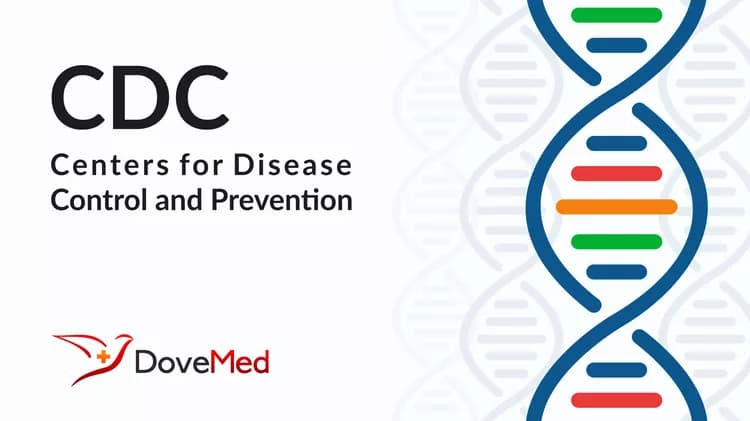
Mortality Declines for Several Leading Causes of Death in 1999
Mortality Declines for Several Leading Causes of Death in 1999
Mortality for several leading causes of death declined in 1999, according to preliminary figures from HHS' Centers for Disease Control and Prevention (CDC), released today by HHS Secretary Tommy G. Thompson.
The report shows age-adjusted death rates continued to fall for heart disease and cancer, the two leading causes of death in the U.S. that account for more than half of all deaths in the country each year. In addition, suicide, homicide and firearm mortality dropped an estimated 6 percent between 1998 and 1999.
At the same time, there were increases for other leading causes of death, including septicemia (6.6 percent); hypertension (5 percent); chronic lower respiratory diseases (4 percent), and diabetes (3.3 percent).
These estimates are featured in a new CDC report, "Deaths: Preliminary Data for 1999," an analysis of over 99 percent of the death certificates recorded in the United States for 1999.
"The report gives us good news and bad news. We're encouraged that fewer Americans are dying from some of the leading causes of death and concerned that other causes are taking a larger toll," said Sec. Thompson. "Many of these deaths are preventable and too many Americans are dying from preventable causes."
Mortality from HIV infection, which dropped more than 70 percent over the previous three years (1996-1998), continued this trend by decreasing nearly 4 percent in 1999. Though it is no longer ranked among the leading causes of death in the U.S., HIV infection still ranks 5th among 25-44 year-olds, and is the leading cause of death for black men in this age group. Among black women in this age group, HIV ranks third.
"We're paying very close attention to the trend in HIV mortality," said CDC Director Jeffrey P. Koplan. "Although HIV as a cause of death has dropped in rank in recent years, we must guard against complacency and continue to emphasize prevention as a key weapon in fighting this disease."
HIV mortality declined 26 percent in 1996, 48 percent in 1997, and 21 percent in 1998.
This latest report incorporates several significant methodological changes, including a more up-to-date age distribution for the U.S. population for calculating age-adjusted death rates and an updated cause-of-death classification and coding system (the Tenth Revision of the International Classification of Diseases, issued by the World Health Organization (ICD-10)).
While the five leading causes of death in 1999: Heart disease, cancer, stroke, chronic lower respiratory disease (formally classified as "Chronic obstructive pulmonary diseases and allied conditions"), and accidents (unintentional injuries) remained unchanged from the previous year, some significant changes did occur in the ranking of leading causes.
Suicide dropped from 8th to 11th among leading causes of death as the number of suicides in the U.S. fell more than five percent from 30,575 in 1998 to 29,041 in 1999.
The new cause-of-death classification system also resulted in a significant shift in ranking for Alzheimer's disease. In 1998, Alzheimer's disease ranked 12th among leading causes of death but jumped to 8th in 1999, due mainly to the inclusion of a cause of death formerly classified separately as "presenile dementia," which accounted for a substantial number of additional Alzheimer's deaths in 1999. The 44,507 deaths from Alzheimer's disease in 1999 surpassed the totals for other major causes of death, including motor vehicle accidents and breast cancer.
"The new data on Alzheimer's mortality adds to our understanding of the magnitude of this serious problem," said Edward Sondik, director of CDC's National Center for Health Statistics, which prepared the report. "It is through improvements in our system that we're able to more accurately measure the impact of this disease and others on our citizens," he said.
The report also shows that the national infant mortality rate was 7.1 infant deaths per 1,000 live births in 1999, compared with 7.2 in 1998. However, the difference was not statistically significant.
Information on causes of death is recorded on death certificates by physicians, medical examiners, and coroners, and reported to the state vital statistics offices. Demographic information is provided by funeral directors, based on information from informants, who are usually family members.
The report can be found on-line at the CDC web site: http://www.cdc.gov/nchs.
The Centers for Disease Control and Prevention (CDC) protects people's health and safety by preventing and controlling diseases and injuries; enhances health decisions by providing credible information on critical health issues; and promotes healthy living through strong partnerships with local, national and international organizations.
Related Articles
Test Your Knowledge
Asked by users
Related Centers
Related Specialties
Related Physicians
Related Procedures
Related Resources
Join DoveHubs
and connect with fellow professionals

0 Comments
Please log in to post a comment.